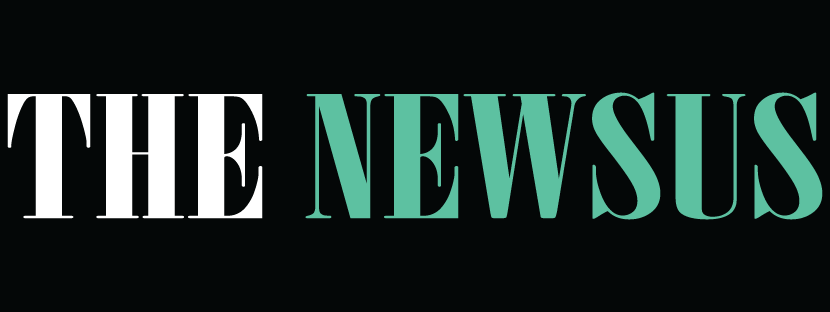Generic vs. Unique: Custom Design Gives Your Brand the Edge in a Crowded Market
Imagine walking down a street where every café has the same logo, same fonts, and the same cozy coffee-cup icon....

Imagine walking down a street where every café has the same logo, same fonts, and the same cozy coffee-cup icon. You wouldn’t remember which one you visited yesterday. That’s what happens when brands look alike online.
In a world where design templates are just a click away, standing out has become harder, but more important than ever. The truth is simple: generic design keeps your brand invisible, while custom design helps people REMEMBER you.
And if you’re thinking, “Why should I pay for custom illustrations when I can grab something free?” I get it. You’re trying to make smart financial choices.
But here’s the real question: is saving a few hundred dollars today worth losing thousands in visibility, trust, and long-term customer loyalty?
Because generic design might feel cheap upfront, but it’s one of the most expensive mistakes a growing brand can make. If you are still unclear and have doubts, continue reading this blog to learn more about this generic vs unique debate and then make a decision for your brand.
Key Takeaways
Here’s what you’ll learn from this post:
- Generic vs Unique: What does your brand need?
- Generic design weakens recall and trust by making your brand look replaceable.
- Custom design builds recognition, credibility, and emotional connection.
- Unique visuals can increase engagement, customer loyalty, and perceived value.
- Knowing the signs of “generic” helps you avoid costly design mistakes.
- Investing in originality is now a wise business decision, not just a creative one.
Generic vs. Unique — What It Really Means for Modern Brands
Design today is not just about how something looks. It is about how people remember it. When you compare a generic design to a unique one, the difference becomes obvious.
Generic design plays it safe. It repeats the same colors, shapes, and layouts everyone else is already using. Unique design takes your story, values, and audience and turns them into visuals made only for you.
Here is what separates the two:
• Generic design blends in and disappears
• Unique design catches people’s attention
A quick example: think about your social media feed. How many posts look the same because they use the same templates? Now think about the brands you actually remember. It is usually the ones with illustrations or visuals that you cannot find anywhere else.
Even small businesses see this difference. A local bakery posting a generic cupcake icon disappears in the feed, while another bakery or a new home chef using a hand-drawn character or custom pattern sees more saves, more shares, and more recognition.
With AI generating thousands of look-alike designs every day, originality has become a real competitive advantage. Unique design does not just look good. It creates identity, trust, and long-term visibility.
What Makes a Design “Generic”?
Let’s start by being honest: many designs today look good, but not different. Generic design doesn’t leave a mark. This is where the generic vs unique contrast becomes clear.
You can usually spot generic design when:
- It uses pre-made templates with no customization beyond a color change.
- It relies heavily on stock photos or trendy icons seen across multiple brands.
- It copies visual styles of popular brands rather than creating its own identity.
- It ignores brand storytelling, which means no meaning behind visuals.
Generic designs often come from a “looks fine” mindset, because they are quick, affordable, and easy to replicate.
Now this is a shortcut that saves time and money – but only in the short term.
Here is why:
It weakens your ability to stand out, especially online, where people scroll fast and forget even faster. When you look at the best custom illustration services USA brands rely on, one thing becomes clear. They avoid repetition by creating visuals that feel personal and emotionally connected to the brand. That is why their designs stay in people’s minds long after the scrolling stops.
Why Unique Design Creates a Competitive Edge
Uniqueness becomes a real strategy when every brand starts using the same colors, the same layouts, and the same templates.
At that point, custom design stops being a nice extra and becomes the only real way to look different. And honestly, if everyone is blending together, why would anyone remember you?
Here is what a unique design actually does for your brand:
• It builds trust faster. People instantly sense when something took skill and intention. That tiny moment of “this feels different” creates a positive impression before they even read a word.
• It improves recall. A memorable illustration works like a mental bookmark. You know a brand by the shape, style, or tone long before the name appears.
• It reveals personality. A unique design feels human. It shows emotion, tone, and character without needing a long explanation.
• It evolves with your brand. A custom system can shift as your offers or audience change, instead of locking you into a template look.
Here is something most people never talk about. Unique design strengthens your positioning in subtle ways. When your brand visuals carry consistent forms, patterns, or illustration details, the viewer’s brain starts linking those shapes to your message. This is how deep-rooted recognition forms, even without repeated slogans or taglines.
There is also the psychological effect.
Research shows the brain responds more positively to visuals that feel intentional and original. That “this looks thoughtfully made” reaction immediately boosts perceived reliability.
Generic design does the opposite. The brain files it under “seen it before,” which weakens trust and lowers engagement.
Another overlooked benefit is clarity. When you work with the best custom illustration design USA teams or similar services, you get visuals built around your exact message. That means fewer misunderstandings, fewer mixed signals, and a stronger emotional link with the viewer.
So, ask yourself: in a crowded world where attention fades quickly, is it safer to blend in with everyone else? Or is it smarter to build a visual identity that people recognize in seconds?
Being unique is not a risk or an option anymore. It is an advantage.
Common Mistakes to Avoid
Custom design can do wonders, but only when done right. Many brands slip into mistakes that cancel out their originality.
Here’s what to watch for and how to fix it, especially if you want to win the generic vs unique battle:
1. Copying Others “For Inspiration”
It’s fine to research competitors, but copying design cues dilutes your identity. Instead, understand why something works and adapt it for your story.
2. Ignoring Brand Personality
Your design should speak your tone: friendly, professional, bold, or calm. When visuals don’t match your voice, they confuse your audience.
3. Overdesigning
Many people think that uniqueness means complexity. It’s wrong. Complex designs require mental energy to be understood. People don’t like it. So, it is better to make a clean, focused design that feels more confident. Uniqueness is about intent, not decoration.
4. Lack Of Consistency
Using one style on social media and another on your site breaks trust. Keep fonts, colors, and tone aligned. Consistency is silent credibility.
Conclusion
In the generic vs. unique debate, there’s a simple truth: design is your first impression, and you don’t get a second chance to leave a lasting mark on your customers.
A generic look might get you started, but a unique one keeps you remembered. Custom design gives your brand meaning, personality, and staying power. It’s not about looking different for the sake of it. It’s about looking like you.
So, the next time you think about rebranding or redesigning, ask yourself: Does this design look like anyone, or does it look like us? If you are confused, then let professional digital illustration services help you out and shape your brand’s identity right.
FAQs
1. Is custom design too expensive for small businesses?
- Not at all. You don’t need a full agency to start. Simple customizations, colors, logo shape, or typography can set you apart. Think of it as an investment in brand memory rather than a cost.
2. Does a unique design mean rejecting trends completely?
- No. Trends can guide you, but they shouldn’t define you. The smart approach is using trends that fit your audience and purpose, not chasing every new style that appears online.
3. How can I tell if my brand design is generic?
- Ask three people who don’t work with you to describe your brand after seeing it once. If they have trouble remembering it clearly or mix it up with something else, that’s a sign you need to improve your visual identity.
4. Can AI tools help with custom design?
- Yes, as long as you use them wisely. AI can help generate ideas, but human direction keeps your design authentic. Use AI for speed and ideas. Let the best custom illustration services in the USA refine those ideas into polished, original artwork that truly represents you.



